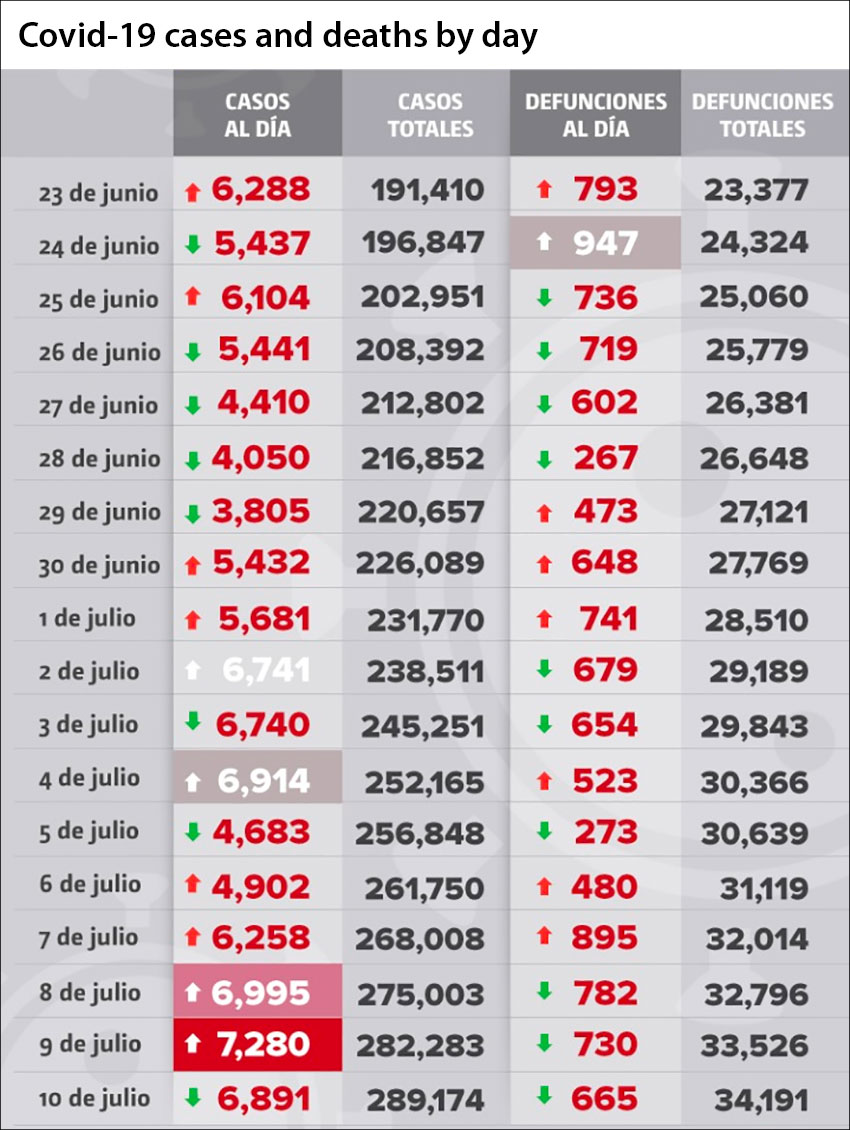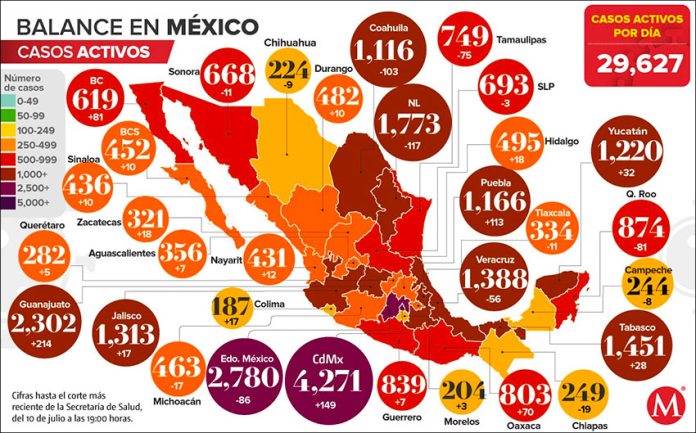The federal government did not update its weekly coronavirus “stoplight” map for the first time since its debut in May, and coronavirus czar Hugo López-Gatell puts the blame squarely on states for inconsistencies in their data.
“We can’t present a national stoplight map when there are gaps in our information,” he said.
“There are states in which the information we have on hand as reported through official channels, such as laboratory data, is not consistent. We are going to evaluate this with the states and rethink things in this regard,” López-Gatell said in Friday evening’s press conference.
“If there is a deficiency of information because the data is not produced on time, or worse because it is distorted, that is why it is not possible to have appropriate monitoring,” López-Gatell noted, adding that one factor in inaccurate data is the lag in reporting testing results.
Although López-Gatell would not say which states had supplied incorrect data, he did note that in the past week that the number of confirmed coronavirus cases rose 29% in Quintana Roo, 17% in Campeche and 15% in Yucatán, and expressed his concern about states reopening too quickly.
Meanwhile, Cristian Morales of the Pan American Health Organization indicated that Mexico is experiencing an “extremely complex situation” and noted that the population is confused by the stoplight map. It is meant to be a guide for when states should reopen and relax coronavirus restrictions and has been criticized by state governors in the past.
Morales told the United Nations Information Center in Mexico that the health emergency is troubling because Covid-19 cases and deaths continue to increase and because of the economic and social impact of the pandemic.
A World Health Organization (WHO) official said it was important to strike a balance between containing the disease and allowing economic activity.
“The blind reopening, regardless of the data, could lead to situations that nobody wants,” said Mike Ryan, executive director for health emergencies, when asked specifically about the situation in Mexico.
“We fully understand the pressure that some governments are suffering, but I recommend seeking a balance between the containment of the coronavirus and the reopening of activities,” he said.
“Reopening in moments of intense community transmission leads to difficult situations that can affect an entire country” and push health systems like Mexico’s to the limit, the WHO expert warned.

López-Gatell responded Friday to Ryan’s comments by reminding the evening press briefing that it had been been made clear “at all times that there was a risk of new outbreaks as a consequence of a resumption of activities.”
But it was the federal government that began announcing economic reopenings in mid-May amid warnings that it was too early. One notable announcement was that over 300 coronavirus-free municipalities would be free to ease restrictions.
A month later the list of so-called “municipalities of hope” had dwindled to just 60 as the virus continued to spread.
López-Gatell’s announcement regarding the delay in releasing the stoplight map will likely draw further criticism of the federal government’s tendency to blame others for the health crisis and its effects. The first came from former president Felipe Calderón.
Instead of recognizing the errors associated with limited testing, a hasty economic reopening and the “bad example” set by authorities who refuse to wear face masks, “now they want to blame the states,” said Calderón, who accused the government of prioritizing “political polarization” over public health.
According to the Ministry of Health, the number of confirmed coronavirus cases in Mexico rose Friday by 6,891 for a total of 289,174. There were another 665 deaths reported, bringing that total to 34,191.
One week ago, when the federal coronavirus map was last updated, 17 states were at the orange level, indicating high risk, and 15 were at the red, maximum risk level.
Yesterday, Mexico City and Quintana Roo declared their own stoplight designations. The former said the city would remain high-risk orange but some areas with high case numbers would be designated maximum risk red effective next week.
Quintana Roo, declared orange last week, announced that the southern region of the state would revert to red, meaning restrictions would be applied in Felipe Carillo Puerto, José María Morelos, Bacalar and Othón P. Blanco.
Source: El Universal (sp), Excélsior (sp), La Silla Rota (sp)
